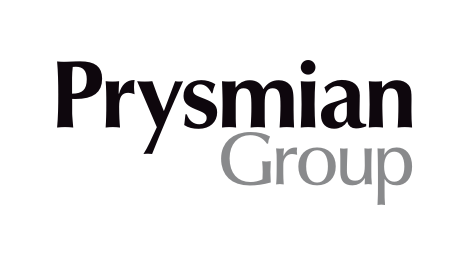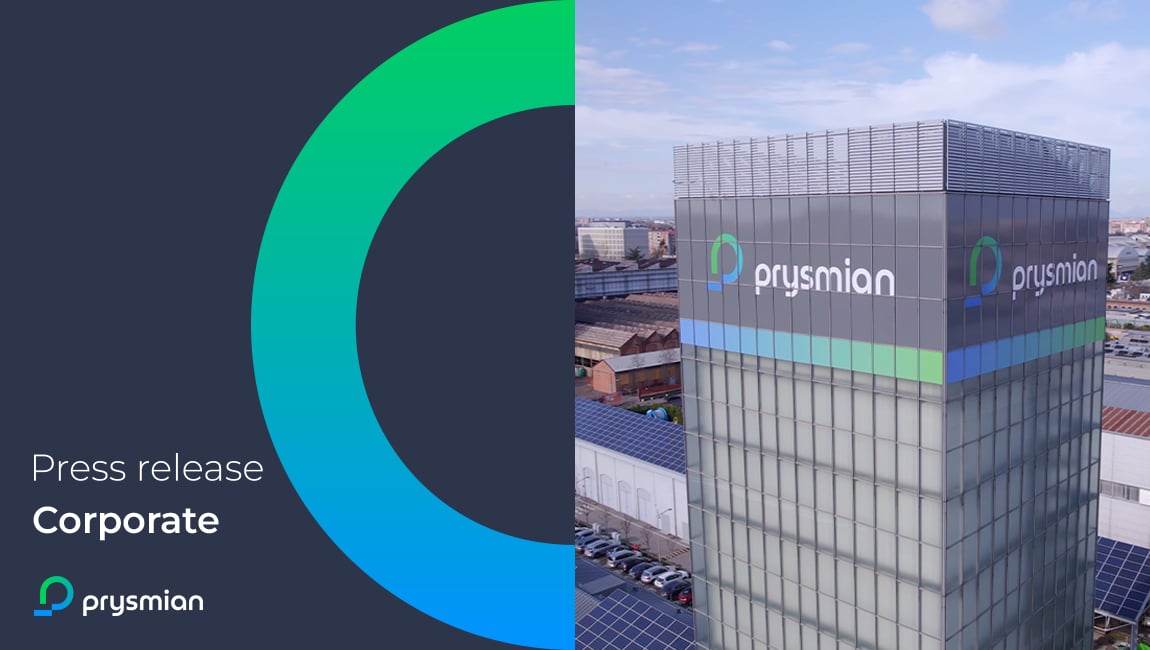Prysmian – Prysmian to acquire Encore Wire for $290.00 per share in cash | Prysmian
Transaction Grows Prysmian’s North America Exposure, Enhancing Geographical and Business Portfolio
Prysmian today announced that it has entered into a definitive merger agreement under which it will acquire Encore Wire (NASDAQ: WIRE) for $290.00 per share in cash (the “Transaction”). The Transaction represents a premium of approximately 20% to the 30-day volume weighted average share price (VWAP) as of Friday, April 12, 2024 and approximately 29% to the 90-day VWAP as of the same date.
At the terms of the Transaction, Encore Wire’s implied Enterprise Value is approximately €3.9 billion[1] representing a multiple of 8.2x EV/2023A EBITDA and 6.3x EV/2023A EBITDA including run rate synergies.
About Encore Wire
Encore Wire is a leading manufacturer of a broad range of copper and aluminum electrical wire and cables, supplying power generation and distribution solutions. Encore Wire’s diversified product portfolio and low-cost of production position it exceptionally well to play a key role in the transition to a more sustainable and reliable energy infrastructure. In fiscal year 2023, Encore Wire delivered revenue of approximately $2.6 billion and EBITDA of $517 million[2].
Strategic Rationale
Encore Wire is highly complementary to Prysmian’s strategy and, in particular, the Transaction will allow Prysmian to:
- increase its exposure to secular growth drivers;
- enhance its exposure to North America;
- leverage Encore Wire’s operational efficiency and best in class service across Prysmian’s portfolio;
- broaden Prysmian’s product offering enabling the combined company to better address customers’ needs in North America; and
- generate ~€140m in run-rate EBITDA synergies expected within 4 years from closing.
“The acquisition of Encore Wire represents a landmark moment for Prysmian and a strategic and unique opportunity to create value for our shareholders and customers,” said Massimo Battaini, Prysmian designated Group CEO. “Through this acquisition, Prysmian will grow its North American presence, enhancing its portfolio and geographic mix, while significantly increasing the exposure to secular growth drivers. We look forward to welcoming the Encore Wire team to Prysmian and benefitting from the combined company’s enhanced product offerings and customer relationships.”
“We are pleased to have reached an agreement that reflects the remarkable value Encore Wire has created with our expansive single-campus model, low-cost production, centralized distribution and product innovation,” said Daniel L. Jones, Encore Wire’s Chairman, President and Chief Executive Officer. “This transaction maximizes value for Encore Wire shareholders and provides an attractive premium for their shares. Encore Wire and Prysmian are two highly complementary organizations, and we anticipate a bright future for Encore Wire as part of Prysmian. Furthermore, as part of a larger, global operation, we expect this transaction will bring additional future opportunities for our employees, whose dedication and hard work made this transaction possible. We look forward to working with Prysmian to complete this value-enhancing combination and realize the significant benefits that we expect it will bring to all of our stakeholders.”
Following closing of the Transaction, Prysmian expects to maintain a significant presence at Encore Wire’s vertically-integrated, single-site, McKinney, Texas campus.
Financial Highlights
Based on pro forma aggregated results for the twelve months ended December, 2023, the combined group would have posted net sales of over €17.7 billion and adjusted EBITDA of approximately €2.1 billion[3].
Prysmian expects to generate run-rate pre-tax synergies of approximately €140 million within 4 years from Closing. One-off capex / costs to achieve the above-mentioned synergies are estimated at approximately 1.2-1.3x run-rate pre-tax synergies.
The Transaction is expected to generate an EPS accretion of ~30% including run-rate synergies, an EPS [4] accretion of ~20% pre-synergies[5] for Prysmian shareholders.
The transaction will be financed through a mix of cash on Prysmian’s Balance Sheet (€1.1 billion) and newly committed debt facilities (€3.4 billion). Pro-forma net debt for the combined group of approximately €5.1 billion, representing a 2.4x 2023 ND/Adj. EBITDA[6] ratio.
Given the strong cash flow generation of the combined business, further enhanced by the synergies, Prysmian will enjoy an accelerated deleverage which is expected to bring leverage ratio (ND/Adj. EBITDA) close to Prysmian standalone 2023 leverage ratio by 2027.
Approvals and Timing
The Transaction, which has been unanimously approved by each company’s Board of Directors and recommended to its shareholders by Encore Wire’s Board of Directors, is expected to close in the second half of 2024, subject to approval of Encore Wire’s shareholders representing at least a majority of the outstanding shares, regulatory approvals, and other customary closing conditions.
*************
Goldman Sachs Bank Europe SE, Succursale Italia is acting as sole financial advisor to Prysmian and Wachtell, Lipton, Rosen & Katz is acting as legal advisor. J.P. Morgan Securities LLC is acting as sole financial advisor to Encore Wire and O’Melveny & Myers LLP is acting as legal advisor.
Conference Call to Discuss Transaction Monday 15th of April at 10:00 a.m. CET a presentation and a conference call for analysts and institutional investors will be hosted by Massimo Battaini, designated CEO of Prysmian. Please find below the link to access the webcast:
Webcast link: https://edge.media-server.com/mmc/p/evqv6n35
*************
[1]Equivalent to $4.2 billion, converted at 1.08x USD/EUR FX
[2]Encore financials based on US GAAP
[3]Based on PF EBITDA of €2,102m (Prysmian €1,628m + Encore Wire $517m converted at 1.08x USD/EUR FX of €479m). Encore Wire financials based on US GAAP.
[4]EPS stands for Earnings per share
[5]EPS accretion computed without considering potential PPA impact deriving from the Transaction. Encore Wire financials as per US GAAP.
[6]Based on pro-forma EBITDA of €2,102m (€1,628m + $517m converted at 1.08x USD/EUR FX of €479m).
SourcePrysmian Group
EMR Analysis
More information on Prysmian: See the full profile on EMR Executive Services
More information on Valerio Battista (Group Chief Executive Officer, Prysmian Group until 18th of April, 2024 + Proposed Candidate as Vice-Chairman of the Board of Directors as from 18th of April, 2024): See the full profile on EMR Executive Services
More information on Massimo Battaini (Group Chief Operating Officer and Executive Director, Prysmian Group until 18th of April, 2024 + Designated Chief Executive Officer as from 18th of April, 2024): See the full profile on EMR Executive Services
More information on Pier Francesco Facchini (Group Chief Financial Officer and Executive Director, Prysmian Group): See the full profile on EMR Executive Services
More information on Encore Wire: https://www.encorewire.com/ + A company based on old-fashioned values.
Encore Wire began its legacy in 1989, as a 68,000 square foot industrial warehouse building in McKinney, Texas. With support and dedication from our employees, our customers and our community, we have grown to over 3.5 million square feet under roof and stretch across 460 acres. Today, Encore Wire is a leading manufacturer of copper and aluminum residential, commercial and industrial building wire.
As an industry leading manufacturer in wire and cable, with innovation in product development and unparalleled service, we give our clients the competitive edge for each and every build.
Encore Wire is a leading manufacturer of a broad range of copper and aluminum electrical wire and cables, supplying power generation and distribution solutions. Encore Wire’s diversified product portfolio and low-cost of production position it exceptionally well to play a key role in the transition to a more sustainable and reliable energy infrastructure. In fiscal year 2023, Encore Wire delivered revenue of approximately $2.6 billion and EBITDA of $517 million.
More information on Daniel L. Jones (Chairman, President and Chief Executive Officer, Encore Wire): https://www.encorewire.com/press-releases/2015-02-09-daniel-jones-chairman.html
More information on Bret J. Eckert (Chief Financial Officer, Encore Wire): https://www.encorewire.com/press-releases/2022-12-01-appointment.html + https://www.linkedin.com/in/breteckert/
EMR Additional Notes:
- Volume Weighted Average Price (VWAP):
- Technical analysis indicator used on intraday charts that resets at the start of every new trading session. It’s a trading benchmark that represents the average price a security has traded at throughout the day, based on both volume and price. VWAP is important because it provides traders with pricing insight into both the trend and value of a security.
- VWAP is calculated by totaling the dollars traded for every transaction (price multiplied by the volume) and then dividing by the total shares traded.
- EBITA:
- Earnings before interest, taxes, and amortization (EBITA) is a measure of company profitability used by investors. It is helpful for comparing one company to another in the same line of business.
- EBITA = Net income + Interest + Taxes + Amortization
- EBITDA:
- Earnings before interest, taxes, depreciation, and amortization (EBITDA) is an alternate measure of profitability to net income. By including depreciation and amortization as well as taxes and debt payment costs, EBITDA attempts to represent the cash profit generated by the company’s operations.
- EBITDA and EBITA are both measures of profitability. The difference is that EBITDA also excludes depreciation.
- EBITDA is the more commonly used measure because it adds depreciation—the accounting practice of recording the reduced value of a company’s tangible assets over time—to the list of factors.
- CapEx vs. OpEx:
- Capital expenditures are a company’s major, long-term expenses while operating expenses are a company’s day-to-day expenses. Examples of CapEx include physical assets, such as buildings, equipment, machinery, and vehicles. Examples of OpEx include employee salaries, rent, utilities, and property taxes.

- Earning Per Share (EPS):
- Company’s net income subtracted by preferred dividends and then divided by the average number of common shares outstanding. The resulting number serves as an indicator of a company’s profitability. It is common for a company to report EPS that is adjusted for extraordinary items and potential share dilution.
- The higher a company’s EPS, the more profitable it is considered to be.
- Earnings per share value is calculated as net income (also known as profits or earnings) divided by available shares. A more refined calculation adjusts the numerator and denominator for shares that could be created through options, convertible debt, or warrants. The numerator of the equation is also more relevant if it is adjusted for continuing operations.
- Generally Accepted Accounting Principles (GAAP):
- GAAP is the set of accounting rules set forth by the Financial Accounting Standards Board (FASB) that U.S. companies are expected to follow when putting together their financial statements.
- The goal of GAAP is to ensure that a company’s financial statements are complete, consistent, and comparable.
- GAAP may be contrasted with pro forma accounting, which is a non-GAAP financial reporting method.
- GAAP is used mainly in the U.S., while most other countries follow the International Financial Reporting Standards (IFRS). IFRS is currently used in 168 jurisdictions around the world.
- GAAP is also used by states and other government entities in the U.S. in preparing their financial statements.
- International Financial Reporting Standards (IFRS):
- Alternative to GAAP that is currently used in 168 jurisdictions around the world, including those in the European Union.
- Set of accounting rules for the financial statements of public companies that are intended to make them consistent, transparent, and easily comparable around the world.
- They were issued by the London-based Accounting Standards Board (IASB) and address record keeping, account reporting, and other aspects of financial reporting.
- The IFRS system replaced the International Accounting Standards (IAS) in 2001.
- IFRS fosters greater corporate transparency.
- Chinese companies do not use IFRS or GAAP. They use Chinese Accounting Standards for Business Enterprises (ASBEs).
- There are differences between IFRS and GAAP reporting.
- For example, IFRS is not as strict in defining revenue and allows companies to report revenue sooner. A balance sheet using this system might show a higher stream of revenue than a GAAP version of the same balance sheet.
- One major issue is the treatment of inventory. IFRS rules ban the use of last-in, first-out (LIFO) inventory accounting methods, while GAAP rules allow for LIFO. Both systems allow for the first-in, first-out method (FIFO) and the weighted average-cost method.


